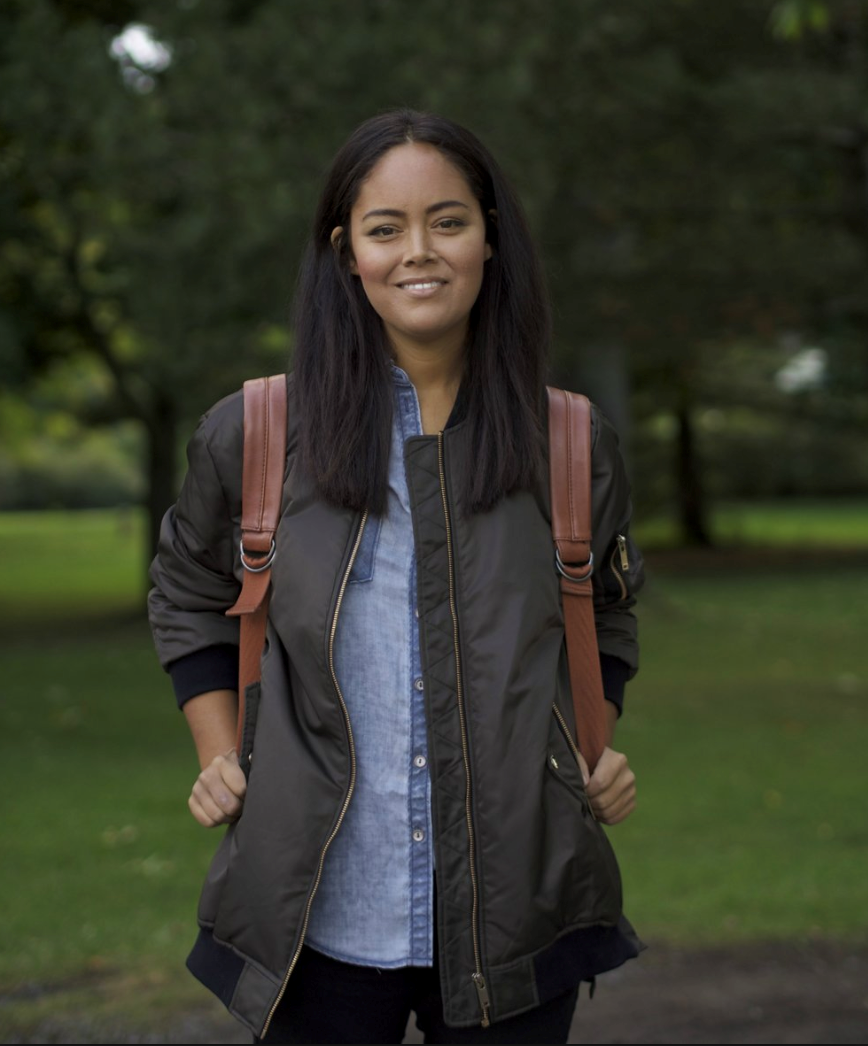 Nyla InnuksukimagineNATIVE.orgNyla Innuksuk is a pretty amazing human! She has been through a lot in her young life and come out the other side, still smiling, still inspiring, still creating. In her own words, Nyla is, "a producer of film and virtual reality content. Lover of dogs that are not my own. I started Mixtape VR with just a backpack full of VR headsets and a passion that started with my first Toronto Meet-up and hasn't quit.” A Ryerson Film School grad and CFC alum, the short film Nyla produced, Kajutaijuq: The Spirit That Comes was chosen as a TIFF TOP TEN short, she was named the inaugural imagineNATIVE Indigenous VR/AR Artist in Residence and she’s working with MARVEL comics to create an indigenous superhero. Nyla is also in development for a feature 2D (flattie) movie called SLASH/BACK that she is writing, producing and directing alongside Scythia Films and Stellar Citizens. According to Innuksuk, “It’s a coming of age, action adventure sci-fi about a group of girls from Nunavut who chase down aliens and battle them.” I’m in! That’s just a bit of what Nyla’s got going on so MY HERO was lucky to catch up with her in Toronto, Canada, for this interview.
Nyla InnuksukimagineNATIVE.orgNyla Innuksuk is a pretty amazing human! She has been through a lot in her young life and come out the other side, still smiling, still inspiring, still creating. In her own words, Nyla is, "a producer of film and virtual reality content. Lover of dogs that are not my own. I started Mixtape VR with just a backpack full of VR headsets and a passion that started with my first Toronto Meet-up and hasn't quit.” A Ryerson Film School grad and CFC alum, the short film Nyla produced, Kajutaijuq: The Spirit That Comes was chosen as a TIFF TOP TEN short, she was named the inaugural imagineNATIVE Indigenous VR/AR Artist in Residence and she’s working with MARVEL comics to create an indigenous superhero. Nyla is also in development for a feature 2D (flattie) movie called SLASH/BACK that she is writing, producing and directing alongside Scythia Films and Stellar Citizens. According to Innuksuk, “It’s a coming of age, action adventure sci-fi about a group of girls from Nunavut who chase down aliens and battle them.” I’m in! That’s just a bit of what Nyla’s got going on so MY HERO was lucky to catch up with her in Toronto, Canada, for this interview.
Where did you grow up and how did your family and community influence your choice of career?
"I was born in Igloolik, Nunavut. It is a small hamlet community in the far north. I moved with my mom and my brother to Iqaluit when I was 3 and lived there until I was 8. My family then moved to a farm outside of Kingston where I lived until I moved to Toronto when I was 17. My community and my family certainly influenced my choice in career. My parents are musicians and always had artists around the house and in the north you are always surrounded by stories.
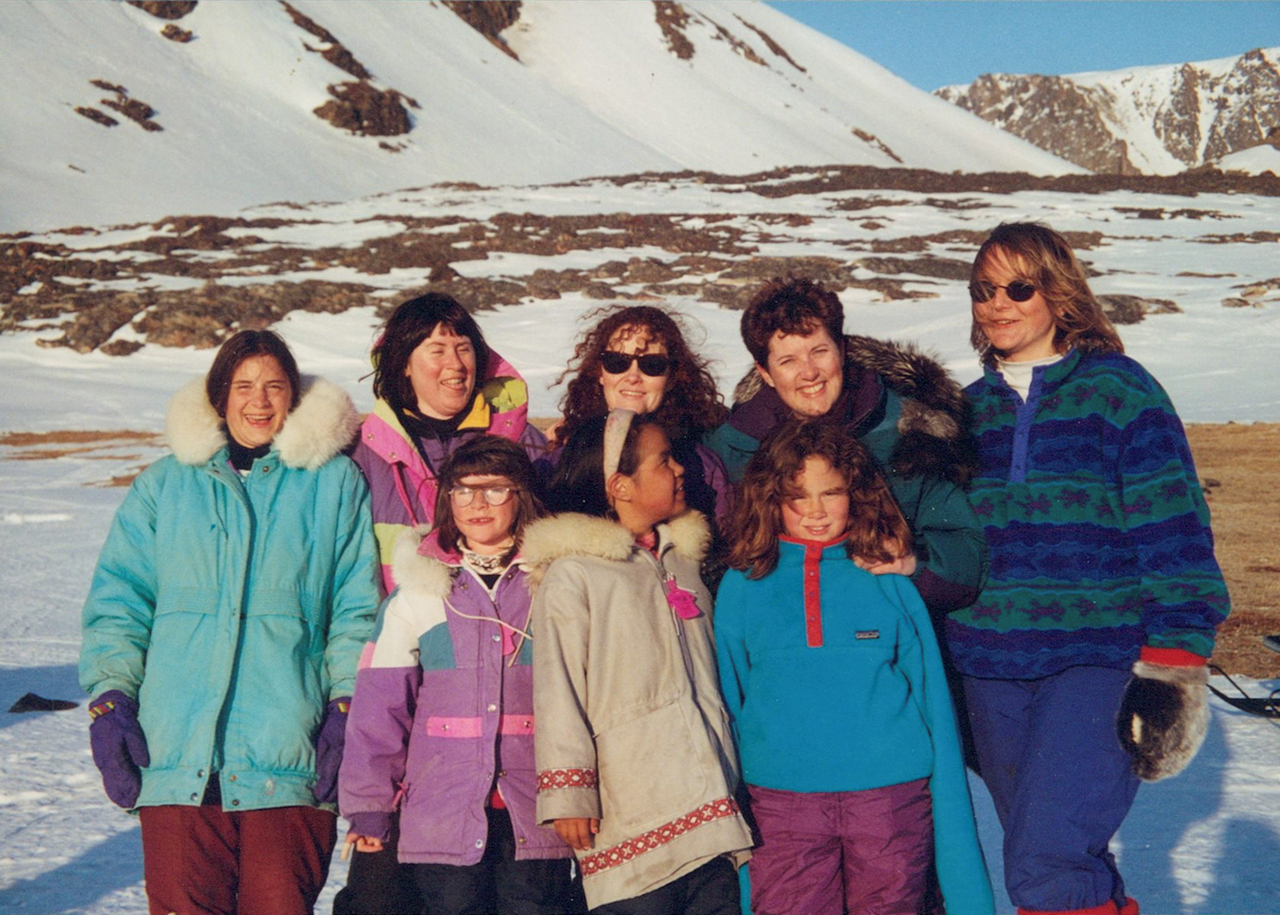 A young NYLA in the ArcticNyla InnuksukI have two brothers, one older, one younger and in Nunavut you have a lot of freedom to run around and explore without the dangers of a big city. And it is a culture where everybody takes care of the children, whether they are yours or your neighbours, so it was a wonderful place to grow up."
A young NYLA in the ArcticNyla InnuksukI have two brothers, one older, one younger and in Nunavut you have a lot of freedom to run around and explore without the dangers of a big city. And it is a culture where everybody takes care of the children, whether they are yours or your neighbours, so it was a wonderful place to grow up."
Can you explain what VR AR and 360 are to our audience as if they have never heard of it?
"Virtual Reality, Augmented Reality and 360 video are all different new media platforms for telling stories. VR requires a headset and is inherently interactive. The audience has a certain level of control beyond just being able to look around in a space which is the case for 360 video which you can watch on a headset, or on your phone, tablet or computer. Augmented Reality is virtual data placed on top of the real world, so good examples of those are Pokemon Go or Snapchat filters. Often you just require a smart phone, although there are AR headsets."
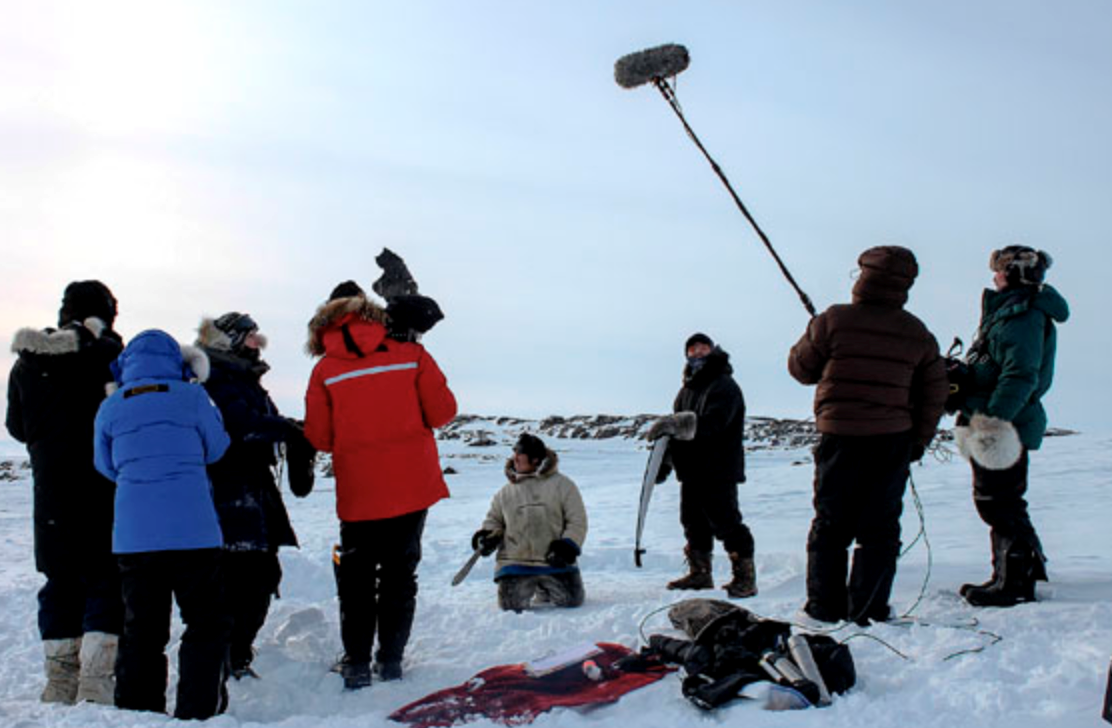 Filming Kajutaijuq: The Spirit That Comes at a location near Iqaluit.Shawn InnuksukWhy do they call VR the empathy machine?
Filming Kajutaijuq: The Spirit That Comes at a location near Iqaluit.Shawn InnuksukWhy do they call VR the empathy machine?
"Chris Milk, who was an early adopter of 360 video coined the term VR as an “empathy machine” a few years ago and I think even he regrets it now. The idea is that VR allows you to experience something you haven’t experienced before which can build your perspective and therefore make you more empathetic. Obviously there are some limitations to the kind of empathy you can build using VR and as an Indigenous person, I find it frustrating that skin colour and one’s culture is something that non POC people think they can try on and gain understanding from. One of my main concerns with the medium is that it is not very accessible and the people being used as subjects in empathy pieces are probably the same communities that will not have access to this kind of technology."
Do you have a favorite project from the past or one coming up you’d like to share?
"I really enjoyed working on a project called SESQUI. I produced a few VR pieces for the app (called Meridian) and after we were done releasing the experience, I went back to Pikangikum, a community in northern Ontario where we had done some filming for one of the pieces. It is an Indigenous community that doesn’t have safe drinking water, let alone access to tech. I was able to go back to Pik with some headsets, phones and a 360 camera which I taught the kids to use and then left with the school so that they could continue making content. For me, being able to give young people the resources to tell their own stories is the best way to avoid empathy pieces that may feel more like trauma tourism because they aren’t being told from within the community."
What advice would you give to young people, students who are just starting out about following their dreams, be it in film or something else?
"The biggest thing that I would recommend is to just try making stuff. Just yesterday I was thinking about a new project that I’ve taken on. I am writing a VR video game and have the task of building this world and telling a story through game play and I realized that this is not too far off the stuff I would do for fun when I was a kid. When I was 8 or 9 I was writing a lot of stories, mostly fantasy stuff. As I grew up I started making silly movies and also playing a lot of video games.
Eventually I went to film school and was working for 7 or 8 years in production when I heard about VR and 360. I was still working my regular job but now I was spending every evening and every weekend researching and playing around with camera rigs and gaming engines. Eventually I just started making stuff and was taking work meetings during my lunch breaks and it got to the point where I decided to just explore new media full time. It was a risk, but I had a passion for it that I think other people got excited about because I haven’t stopped."
You’ve met a lot of interesting people in your life, who is your hero and why?
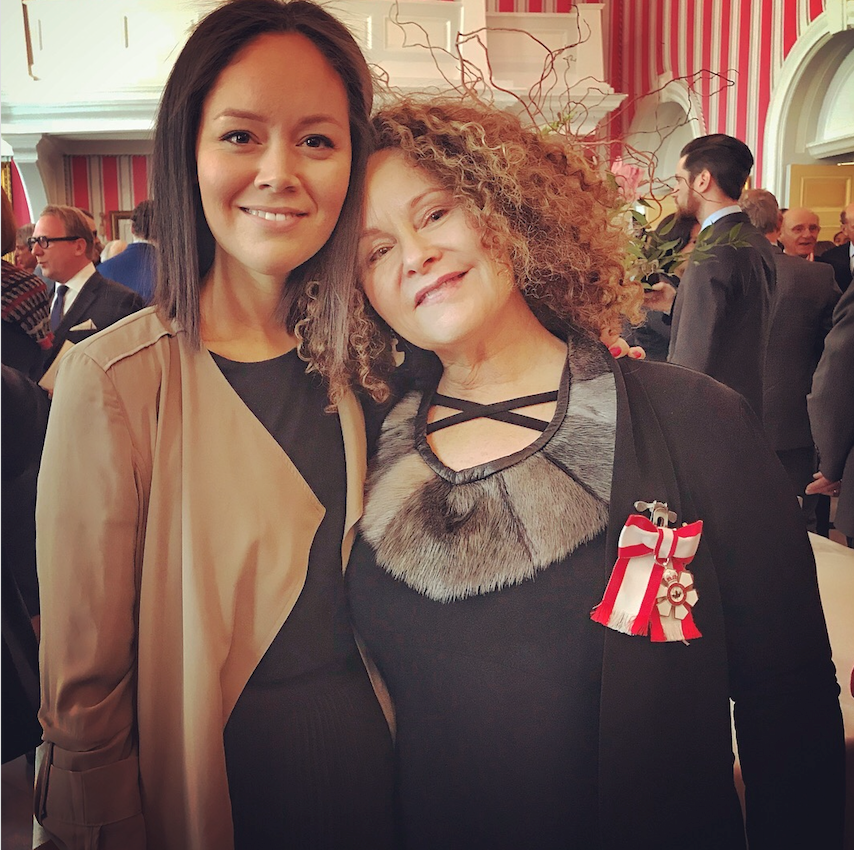 Nyla and her mom Ellen HamiltonNyla Innuksuk"I feel like my mom is probably a hero to a lot of people, that’s how great she is. She is someone who is always thinking bigger and will work incredibly hard in order to lead a team. She was a young mother who was raising two Inuk kids by herself in the Arctic and now she puts all of her energy into giving other Inuit the skills and opportunities to succeed. She produces films, writes rehabilitation programs for Indigenous people within the prison system, she runs a non-profit arts organization and is an amazing singer songwriter. She is great and you don’t even have to take it from me, other people think so too. She has received the Order of Nunavut as well as the Order of Canada for her work."
Nyla and her mom Ellen HamiltonNyla Innuksuk"I feel like my mom is probably a hero to a lot of people, that’s how great she is. She is someone who is always thinking bigger and will work incredibly hard in order to lead a team. She was a young mother who was raising two Inuk kids by herself in the Arctic and now she puts all of her energy into giving other Inuit the skills and opportunities to succeed. She produces films, writes rehabilitation programs for Indigenous people within the prison system, she runs a non-profit arts organization and is an amazing singer songwriter. She is great and you don’t even have to take it from me, other people think so too. She has received the Order of Nunavut as well as the Order of Canada for her work."
I don’t know if you want to talk about this but you had a liver transplant a year ago… can you shed some light on that experience and give hope to others out there waiting for transplants?
"Just over a year ago I had a liver transplant and it is something that I am really grateful for. And I don’t just mean that I am grateful for the transplant, I am also really grateful for being sick. I think that’s the way it had to be for me. I found out in 2016 that I had a 50% chance of surviving that month and that I had to get a transplant. I was told you can live at 50% for a long time, but obviously it will eventually get worse. It takes a while to get a transplant and at first they want to see if this is something they can deal with without going that far. Once a transplant is the only option you have to meet with a lot of doctors and undergo a bunch of tests to gauge how sick you are, and figure out where on the transplant list you fit. My family also started the process of getting their blood tested in case one of them could be a donor. By the time I got approved to be on the list, I was very sick and immediately placed at the top of the list. It was less than 24 hours before I got a call saying they had a liver for me.
By this point I had been living for the better part of a year very very ill and had really been sick for 5 years at that point. Something strange happened when I was told I had a 50/50 chance of surviving the month. It was almost like it was the perfect number. I could either look at this situation with the glass half full or half empty. I knew that it would be a lot harder to deal with if I was miserable, so I just kind of decided to myself that I was going to be happy and grateful.
The thing is that I happened to be going through some miserable time at work. I had joined a gaming company as an owner of a new VR branch and while it was a blast working in VR, the company itself made its money for the most part by appearing as an Inuit gaming company and I felt like I was being tokenized as the only Inuk at the company
And now I was dying, but now I knew that this bs I was dealing with at work was just that… bullshit. And I had 50/50 chance at living so I wasn’t going to waste that time working with slimy nerds. So I quit, even though it meant not working and not knowing what I was going to do after I got better. It’s weird but right up until I got really sick and had difficulty thinking clearly or being able to do things on my own, I was very happy. And it wasn’t just being content, I would look in the mirror and feel overwhelmed by joy because I was alive and I had realized that any stresses that I had were things I could deal with by just cutting them out.
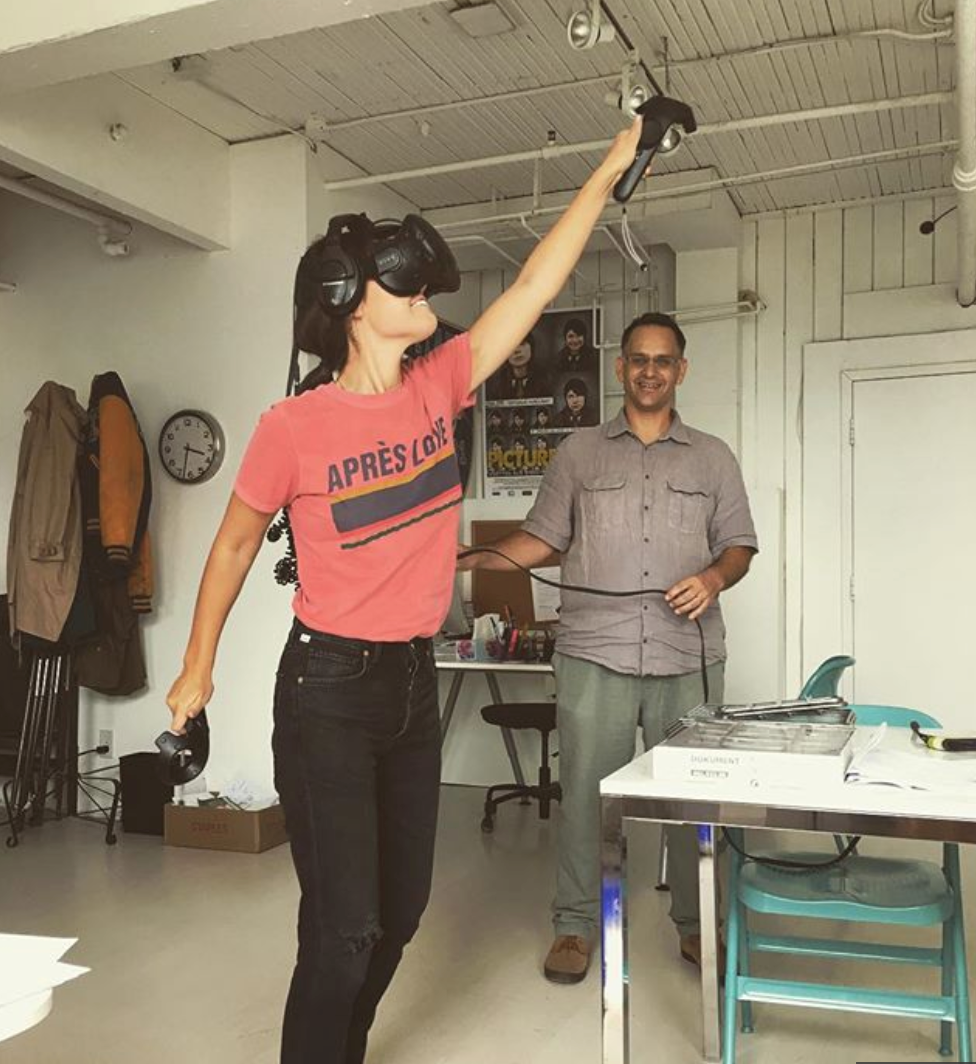 Nyla working the VR demonstration in her officeNyla InnuksukI know in real life you can’t just choose what bits are stressful and just cut them out of your life. But for a lot of things, you actually can do just that. I used to overwork and get stressed out about work so I made a decision to only work on things that I am passionate about. If I don’t like a project, I will just say no. This is part one. Part two is saying yes to things that you may not be comfortable with, but are excited by. So that means when someone asked if I would like to write a VR video game or write a short story, or direct my first feature, that I could say yes. I don’t think that I would have come to this realization without having been sick first and certainly taking the time I needed to put myself first, taught me a lot about how to manage my life."
Nyla working the VR demonstration in her officeNyla InnuksukI know in real life you can’t just choose what bits are stressful and just cut them out of your life. But for a lot of things, you actually can do just that. I used to overwork and get stressed out about work so I made a decision to only work on things that I am passionate about. If I don’t like a project, I will just say no. This is part one. Part two is saying yes to things that you may not be comfortable with, but are excited by. So that means when someone asked if I would like to write a VR video game or write a short story, or direct my first feature, that I could say yes. I don’t think that I would have come to this realization without having been sick first and certainly taking the time I needed to put myself first, taught me a lot about how to manage my life."
If you had the attention of the world for 5 minutes what would you do or say?
"I would hang out with my nephews and my brothers probably. My nephews are the cutest and a lot of what I do is for them. I have been working with Jim Zub to create this character for Marvel called Amka who is a superhero from Pangnirtung where my nephews live. The reason I started working with Marvel in the first place was because my nephews are such big fans of superheroes. My little brother Luke directs a kid’s animated television show set in the Arctic. He basically makes the show so that he can watch my nephews watch it."
Thanks so much Nyla and keep on being awesome!
Page created on 7/11/2018 6:44:13 PM
Last edited 9/1/2020 5:35:03 AM
